Ah, summer! That time of year when we dream of diving into a pool of crystal-clear water… But let's be honest, who wants to spend their time chasing after leaves, insects and other floating debris that come along to invite themselves to the party? This is where the Aiper Surfer S1, a solar-powered surface cleaning robot, comes in to save the day. I've tried it out, and believe me, you can put the landing net to bed!
Unpacking the Aiper Surfer S1
The robot's packaging immediately sets the mood, displaying this Aiper Surfer S1 floating on the surface of a pool, while the little family rests.
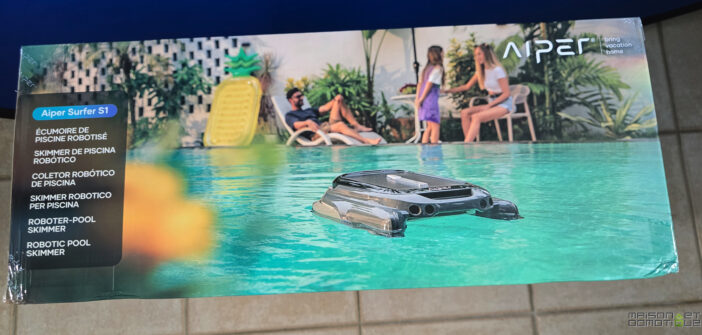
Inside, you'll find the robot, along with a charger and instructions.
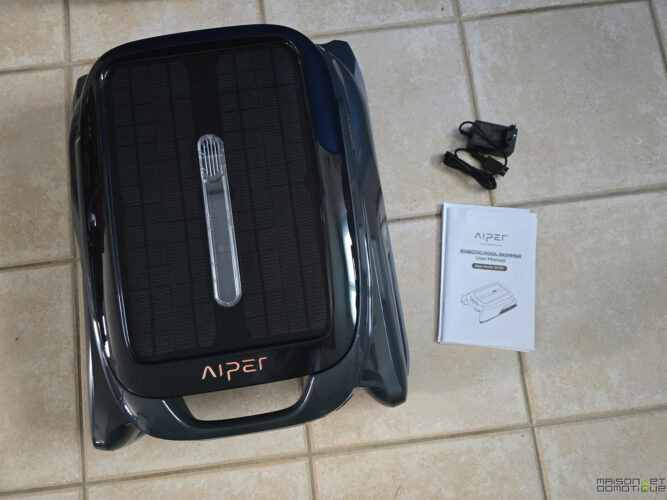
When you receive the Aiper Surfer S1, you almost wonder whether this little solar-powered catamaran will really achieve what it promises. A simple but effective design: two floats, a large sliding solar panel and a 5-liter debris basket well hidden under the hull.
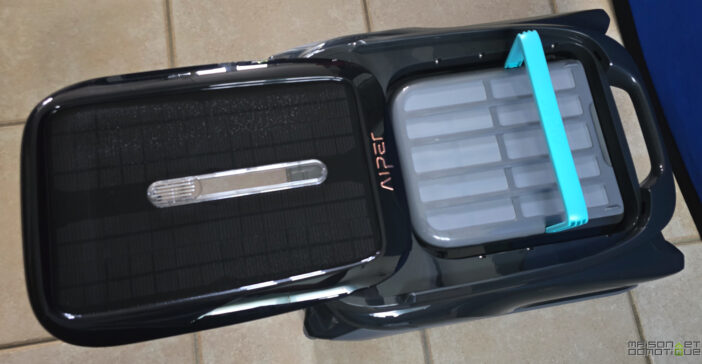
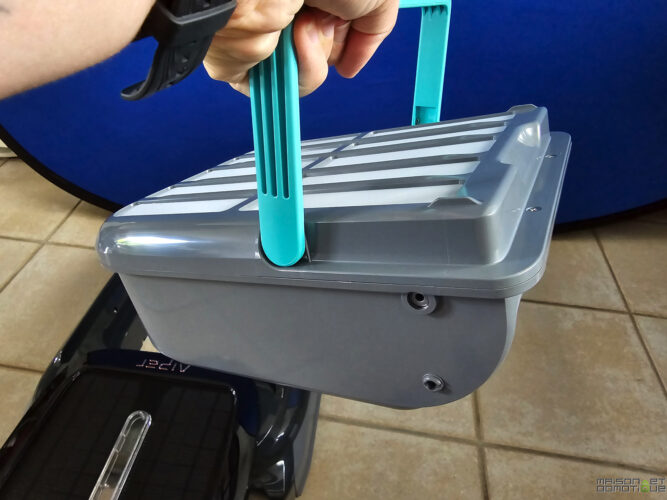
The assembly is of high quality, with a sturdy plastic finish that inspires confidence.
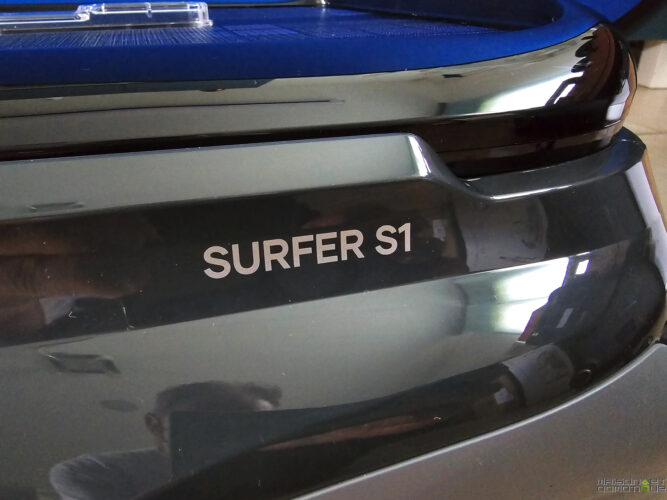
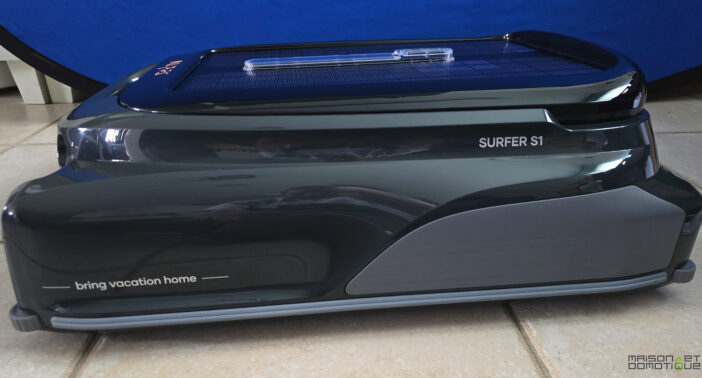
The motorized propellers at the rear immediately make you think of a high-tech toy, but this robot is for serious work.
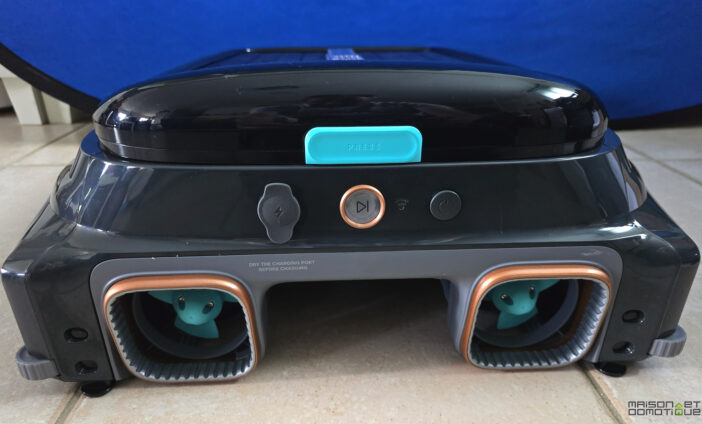
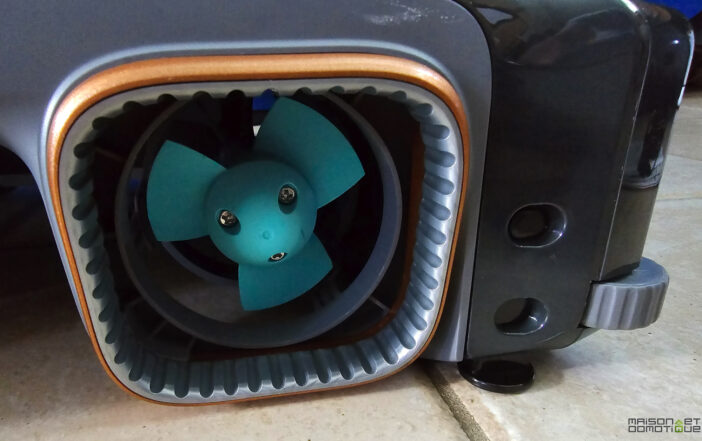
Of course, it doesn't move blindly: it's fitted with sensors at the front:
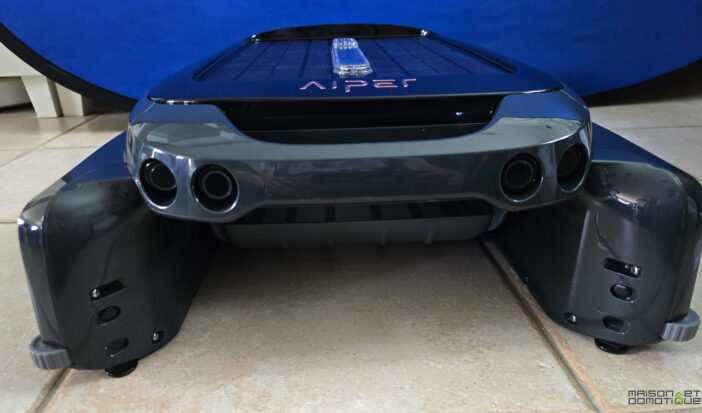
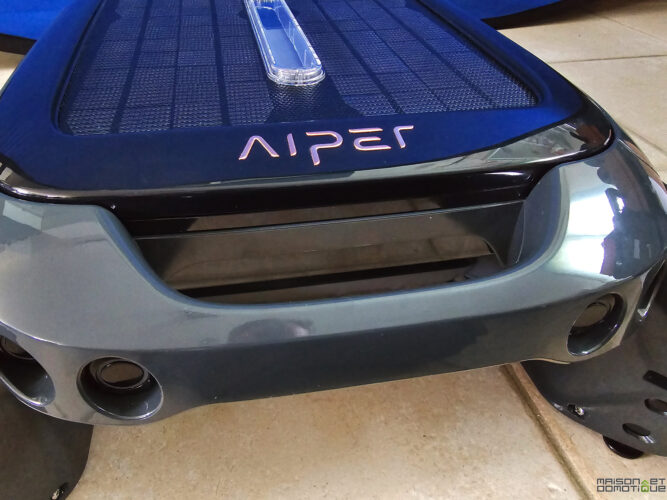
And small wheels on the sides allow it to glide smoothly along the edge:
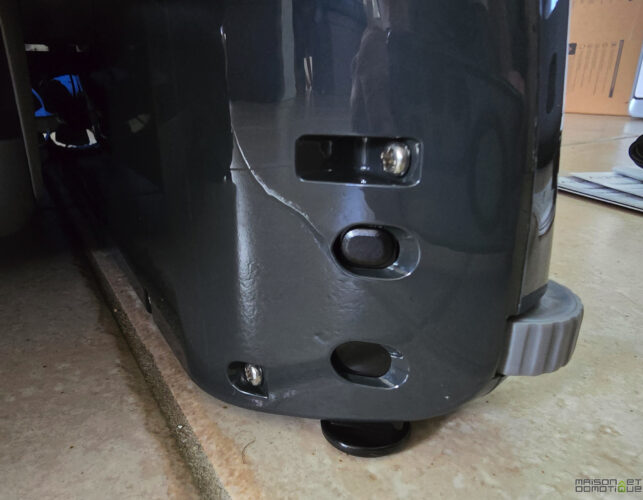
Before throwing it into the deep end, you'll need to give it a little juice with the AC adapter (count on a good 2- to 3-hour recharge for its first use).
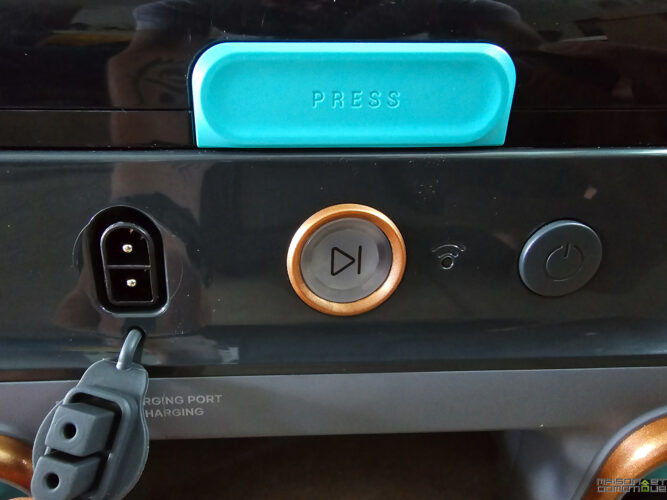
An interesting addition compared to the Maytronics Dolphin Skimmi model we tested, which could only be charged via the sun.
Good point: a simple button is all it takes to switch it on, and another to start cleaning.
But the star feature is obviously the solar panel. In midsummer, you can almost forget that it needs to recharge from the mains. Under the sun, it works almost infinitely!
The mains charger is handy for the first charge, or for recharging from time to time during long periods of bad weather. But having tested it in September, despite mixed weather, I didn't have to recharge it in a month.
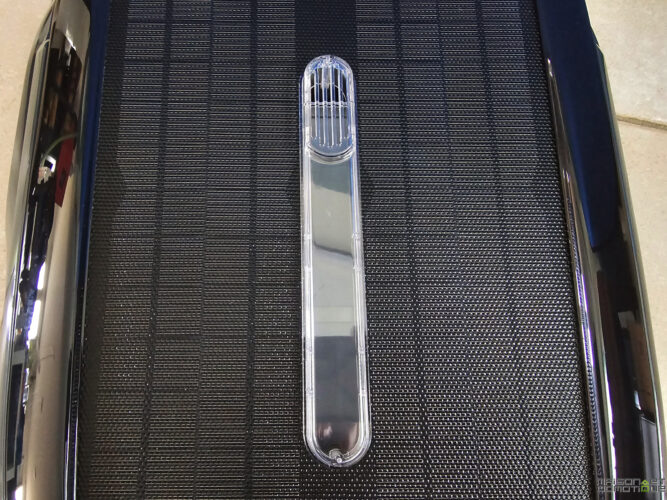
And let's not forget the handy handle on the front for retrieving the robot:
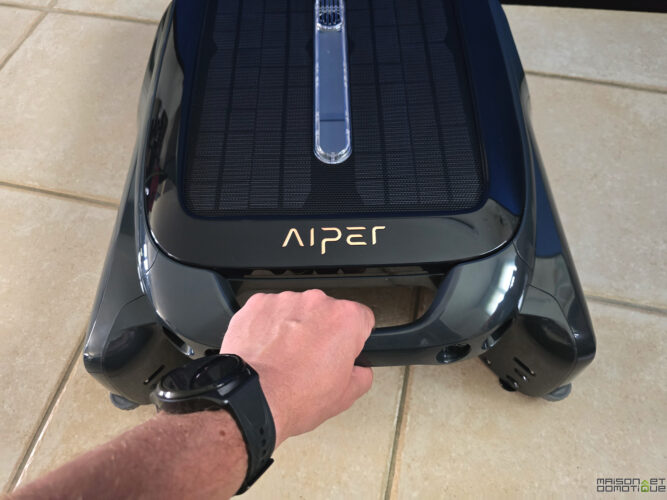
Aiper Surfer S1: Testing in real-life situations
The moment of truth arrived. After the first full charge, I gently placed it on the water, and it began to sail along as if it knew exactly what to do. Its mission? Move autonomously to suck up anything floating on the surface of my pool, be it leaves, insects or even a few small branches that have fallen after a gust of wind.
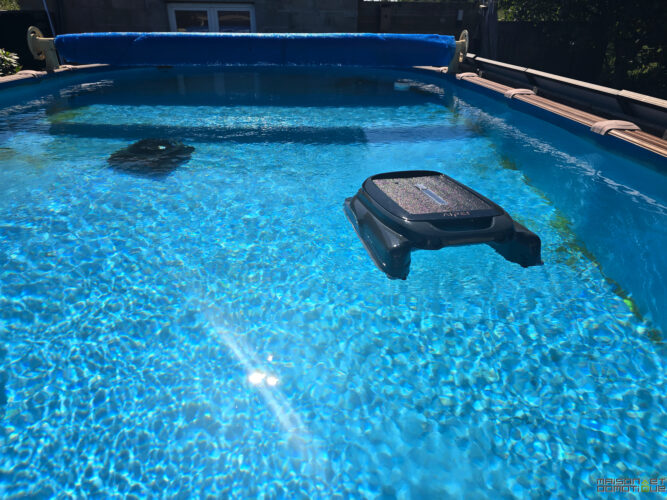
The first surprise is its silence. The Aiper Surfer S1 is so discreet that you almost forget it's there. Yet its effectiveness is real. It roams the pool at random, tacking as it approaches the walls thanks to its ultrasonic sensors. So, yes, it occasionally bumps into the edges here and there, but nothing serious. It's even a little fun, especially with the mobile app that lets you control it manually.
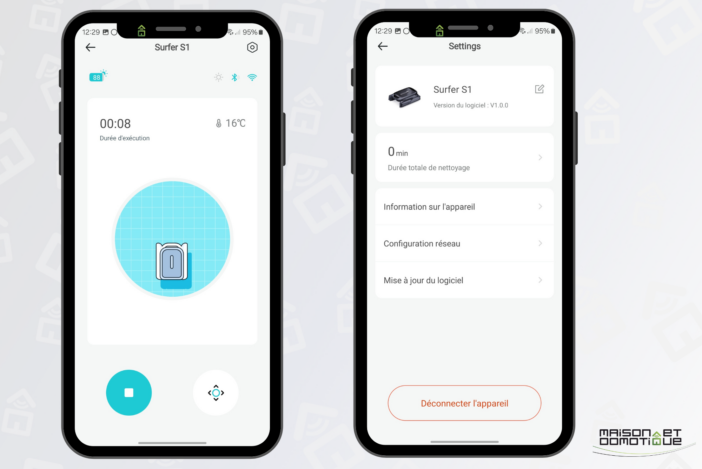
I had fun directing the robot to specific areas where leaves seemed to want to accumulate. With this app, you can also monitor the water temperature. It's always a good idea to know if it's time to take a dip, especially as the robot is Wifi-connected. Data can therefore be consulted from anywhere.
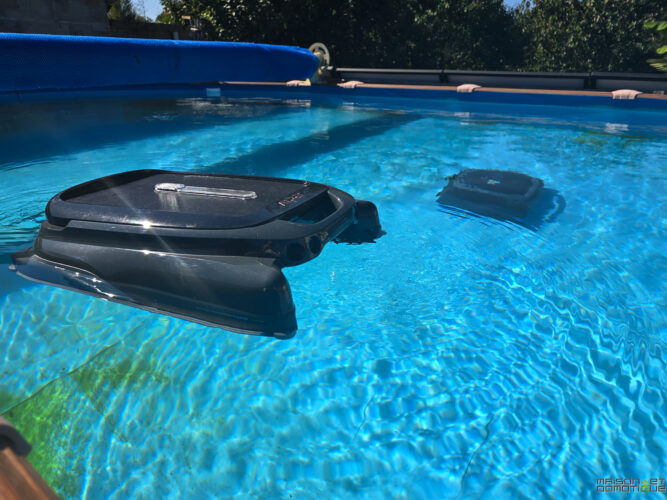
Of course, not everything is perfect. If you leave toys or floating mattresses in the water, expect Surfer S1 to get stuck like a fish caught in a net. It also dislikes strong currents caused by pool backwash, which can sometimes confine it to an area without it being able to escape.
Performance and efficiency
After a good hour's cleaning, the surface of my pool was spotless, free of all the little leaves and insects that would normally have required a session with the net. This robot doesn't suck up debris directly; it pushes it into its basket thanks to a paddle wheel. This method is quite effective, except when it comes to collecting larger leaves or pine needles, which unfortunately start to fall in September. In these cases, the robot sometimes has trouble getting them back to the basket.
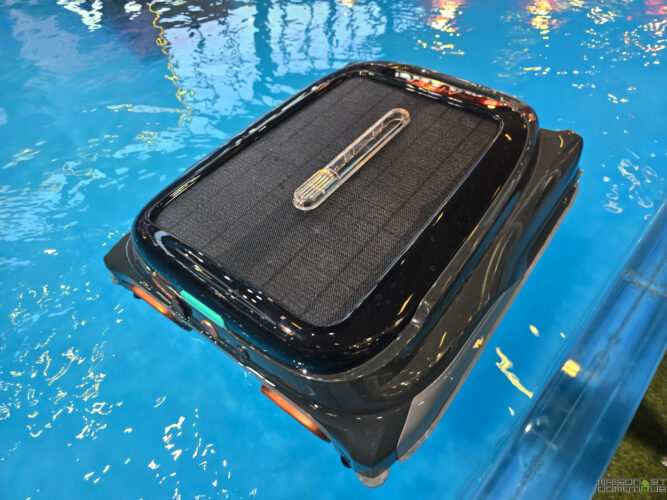
In any case, autonomy is one of its strong points. In solar mode, it can operate for hours without flinching, and even on cloudy days, it provides a dozen hours of autonomy before needing to be recharged from the mains. That said, be careful not to take it out of the water any old how. If you switch it off before removing it, some debris may be deposited back in the water. I've had to restart a cleaning cycle because of this. Good to know!
Its large, almost completely enclosed basket is another plus. No need to empty it every day, the robot can work for days on end, thanks to its solar recharge, and its large basket, which opens in two for easy emptying and cleaning.
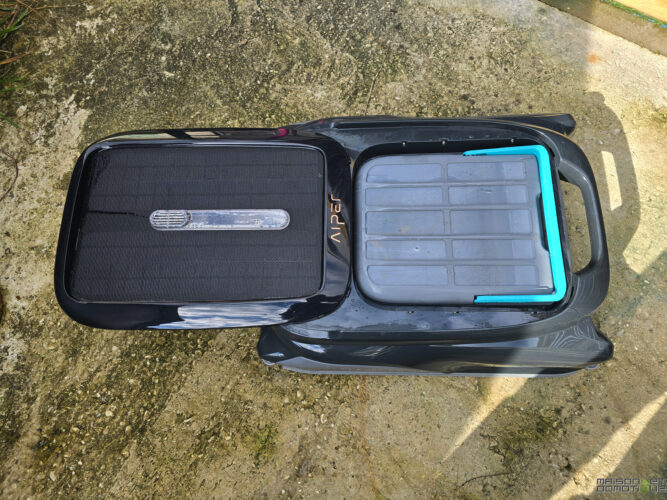
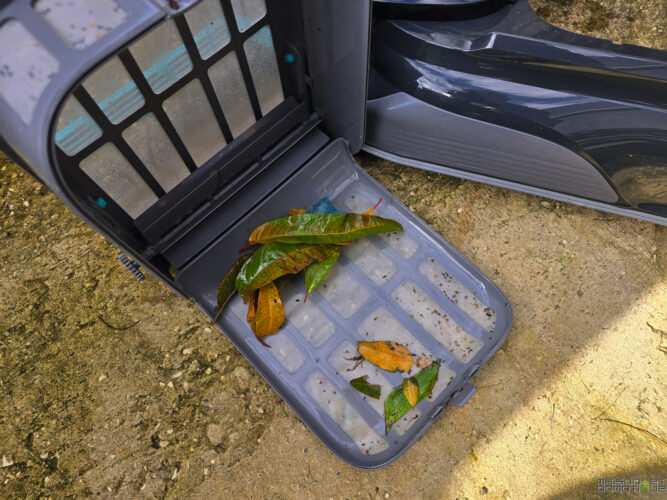
It's really practical! Its 200μm filtration system retains all surface dirt, right down to pollen.
Conclusion
We discovered the principle of the “skimmer” robot with the Maytronics model at the beginning of the summer. Although I was initially sceptical about the benefits of such a robot, experience has shown its worth. And the children regretted its departure, which signalled the return of the landing net before each swim… In other words, the arrival of the Aiper Surfer S1 was a minor revolution. Easy to use, silent and, above all, self-sufficient thanks to its solar panel, it does the job without asking too much of you. Of course, it's not perfect: its price may seem high for a robot that only cleans the surface(currently 430€), and it remains vulnerable to floating objects that sometimes prevent it from moving forward. But for those who hate using a net before every swim, it's a worthwhile investment! Now, when will we see a robot capable of cleaning the bottom, the sides AND the surface?


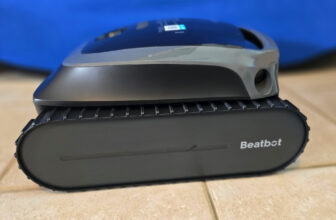
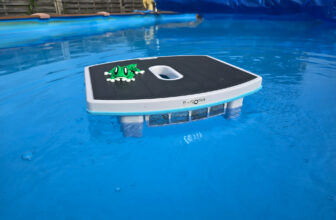
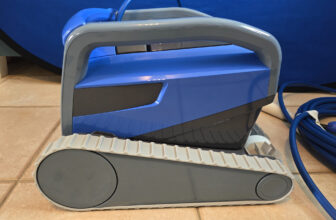

Please remain courteous: a hello and a thank you cost nothing! We're here to exchange ideas in a constructive way. Trolls will be deleted.